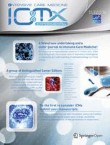Mechanical power (MP) is a summary variable incorporating all causes of ventilator-induced-lung-injury (VILI). We expressed MP as the ratio between observed and normal expected values (MPratio).
Authors:
Rosanna D’Albo, Tommaso Pozzi, Rosmery V. Nicolardi, Mauro Galizia, Giulia Catozzi, Valentina Ghidoni, Beatrice Donati, Federica Romitti, Peter Herrmann, Mattia Busana, Simone Gattarello, Francesca Collino, Aurelio Sonzogni, Luigi Camporota, John J. Marini, Onnen Moerer…
Citation:
Intensive Care Medicine Experimental
2024
12:65
Content type: Research Articles
Published on: 30 July 2024


